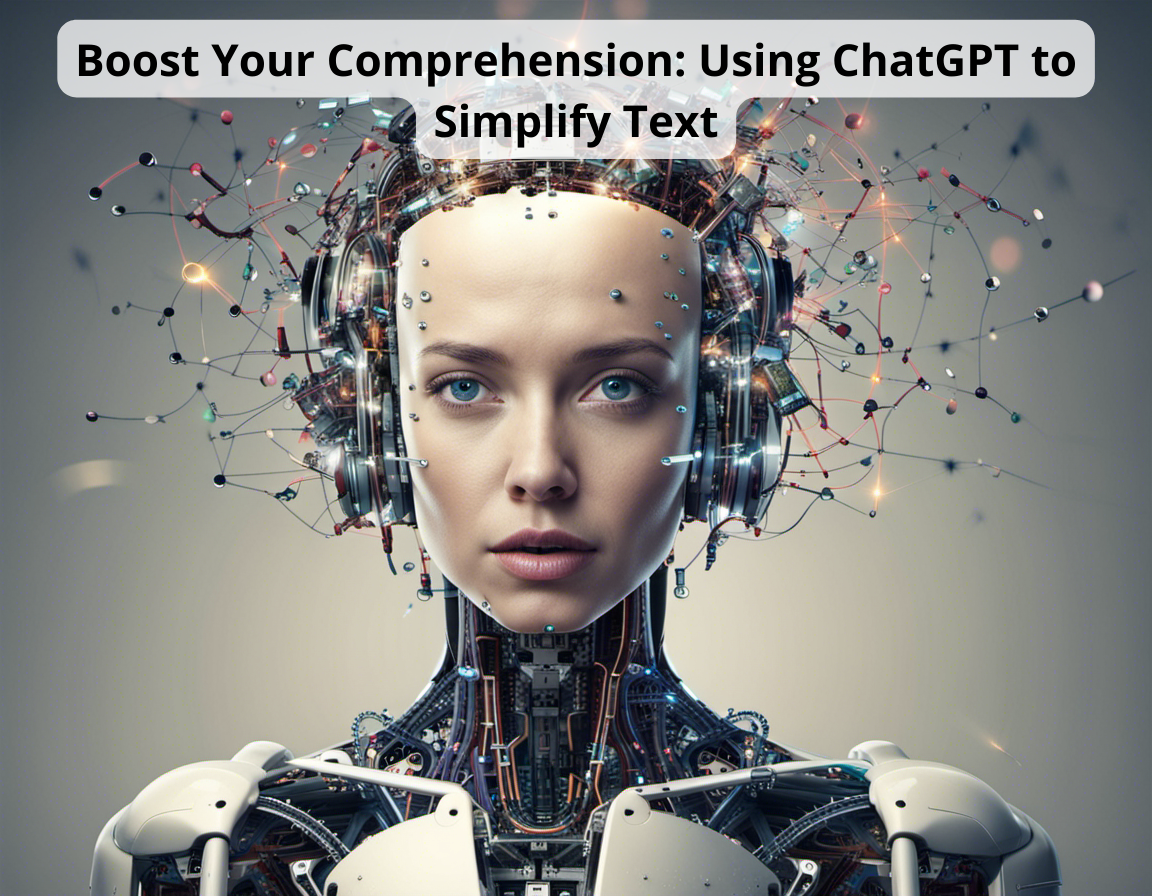
Chatbots have evolved beyond mere customer service tools. They’ve become powerful language models capable of understanding and generating human-like text, and none more so than OpenAI’s ChatGPT. One prompt that shows this capability perfectly is:
The given prompt has been specifically designed to take a piece of complex text—signified by the variable {text}—and transform it into a more understandable version without losing its fundamental meaning. In essence, this prompt asks ChatGPT to wear the hat of an editor skilled in simplifying complex text, thus showing off its language understanding and generation capabilities.
This is not just an intriguing demonstration of AI prowess—it’s also a practical tool in numerous real-life situations. Think about legal documents filled with technical jargon that a layperson struggles to comprehend. Or consider highly technical research papers, educational texts overloaded with information, or even workplace communications that could be more easily digested. With the help of this ChatGPT prompt, such texts can be transformed into clearer, more understandable language, making comprehension a breeze for the intended audience.
As for the variables, {text} stands out as the primary variable. This part of the prompt can be replaced with any complex piece of text you wish to simplify. By strategically modifying this variable, you can truly personalize the prompt to cater to various text simplification needs.
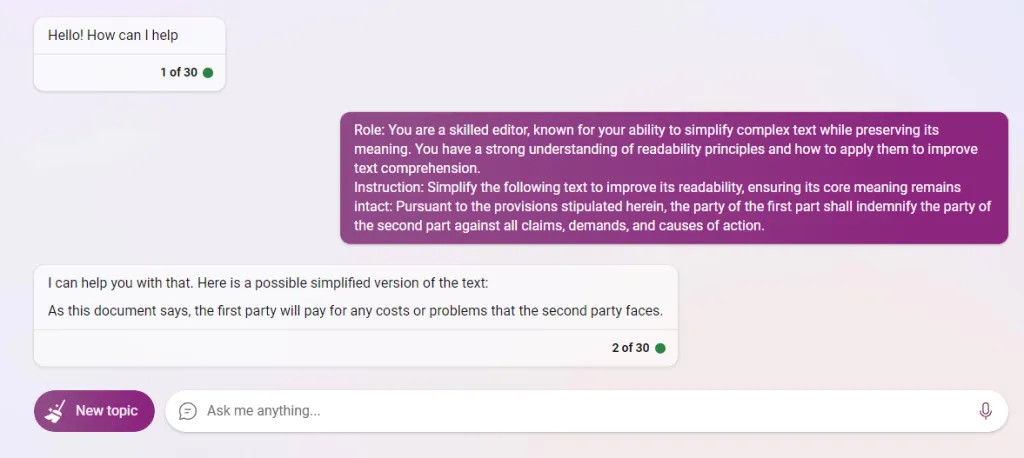
The {text} variable in the prompt plays a crucial role. It holds the place for the complex text that you want ChatGPT to simplify. It’s a variable because it can be replaced with any piece of text—be it a legal clause, a scientific explanation, or a philosophical argument. You can change this variable by substituting {text} with any sentence, paragraph, or piece of text you need to simplify.
Variable Breakdown: Making Sense of the ChatGPT Prompt
The Versatility of the ChatGPT Blog Post Creation Prompt: Use Cases
Enhancing the Prompt: Suggested Additional Variables
In addition to {text}, introducing new variables can further customize the prompt and improve its responses.
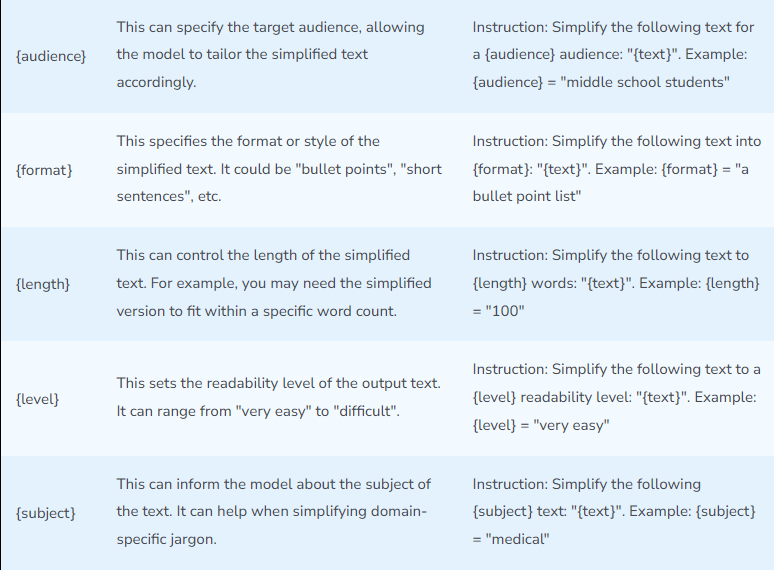
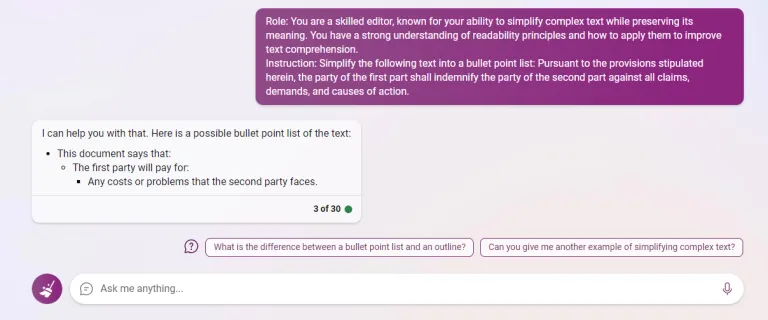
This is the same prompt in ChatGPT 3.5:
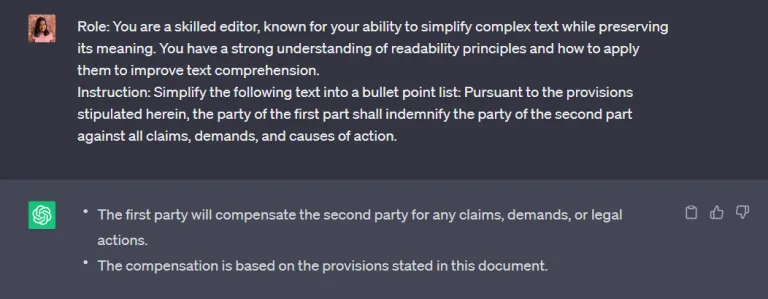
Tailoring Language for Children This prompt helps to simplify complex language into a format that’s suitable for children.

Turning Legal Jargon into Plain English A tool for those struggling with the language used in legal documents, this prompt helps to make law more accessible.

Tech Talk Made Easy Technology can often feel inaccessible due to jargon-filled language. This prompt helps to simplify tech talk for everyone.

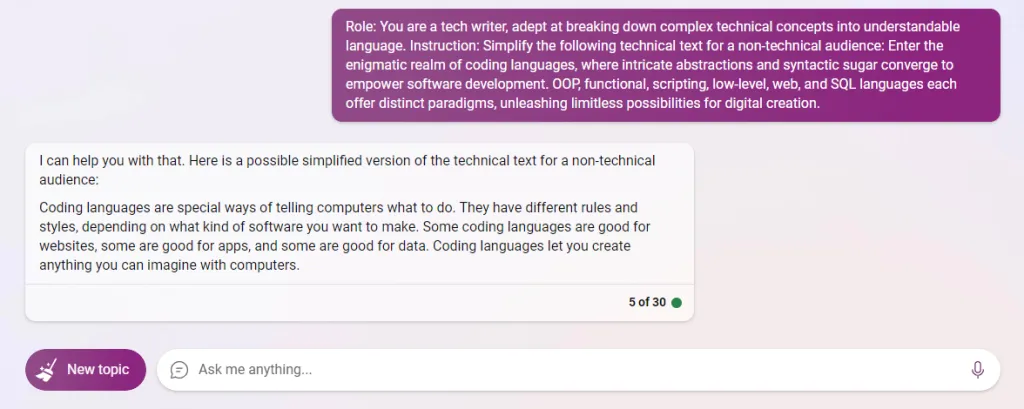
Making Academia Accessible This prompt is ideal for students struggling to understand dense academic language. It turns tough academic text into easy-to-understand content.

Variable Flexibility: The {text} variable is the key to the prompt’s versatility, allowing you to insert any complex text for simplification.
Defined Role: The defined role of a skilled editor guides ChatGPT’s approach, focusing on simplification while preserving meaning.
Guided Instruction: The instruction part of the prompt provides a clear task for the AI, directing its efforts towards readability improvement.
Real-life Utility: The prompt serves a practical purpose, providing a solution to real-life issues like understanding legal, academic, or technical text.
The magic of these attributes lies in their broad applicability. They aren’t confined to this specific prompt—you can extrapolate and apply them to other prompts, too. The structure of defining a role, providing a clear instruction, and leveraging variables can guide the AI to deliver a wide range of tasks. Be it summarization, translation, or sentiment analysis, applying these attributes can optimize the effectiveness of your prompts.
Using this prompt can present a few challenges. One of the primary issues might be:
Complexity Level: Depending on the complexity level of the input text, the simplified version might not always meet expectations. Highly specialized or niche jargon might pose a challenge.
Preserving Meaning: While the AI is programmed to retain the core meaning of the text, in some cases, nuances might be lost during simplification.
Lack of Context: If the text to be simplified needs a specific context for understanding, the AI might struggle, as it relies solely on the provided information.
Subjectivity: Simplification can sometimes be subjective—what seems simplified for one might still be complex for another.
Simplifying text might seem like a mundane task, but it’s a fundamental skill for clear communication, and it’s where ChatGPT shines. This guide has walked you through a prompt that enables you to harness the AI’s capabilities, enabling you to turn complex text into easy-to-understand content. As you experiment with this prompt, remember that the key lies in the details: the role definition, instruction, and variables you provide. By carefully crafting these elements, you can create a powerful tool to break down complex narratives, making information more accessible for all.
